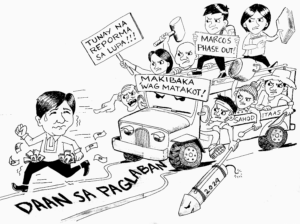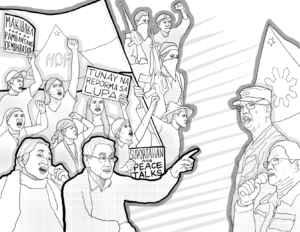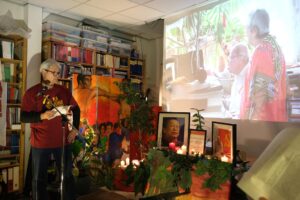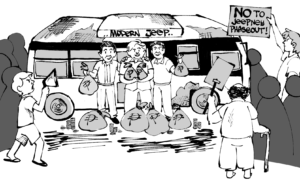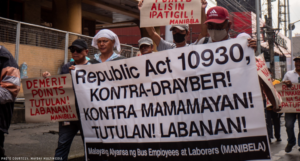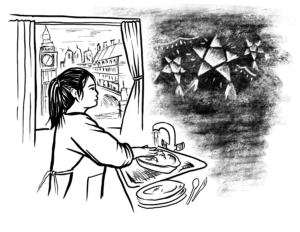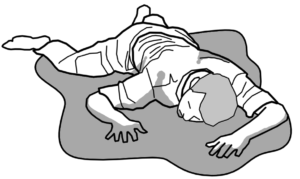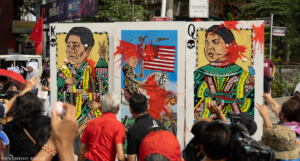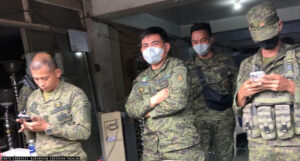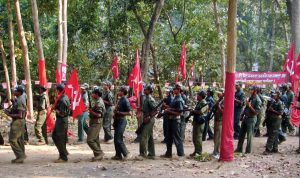Slaughtering the King of the Road, a sacrifice on the altar of imperialist Japan

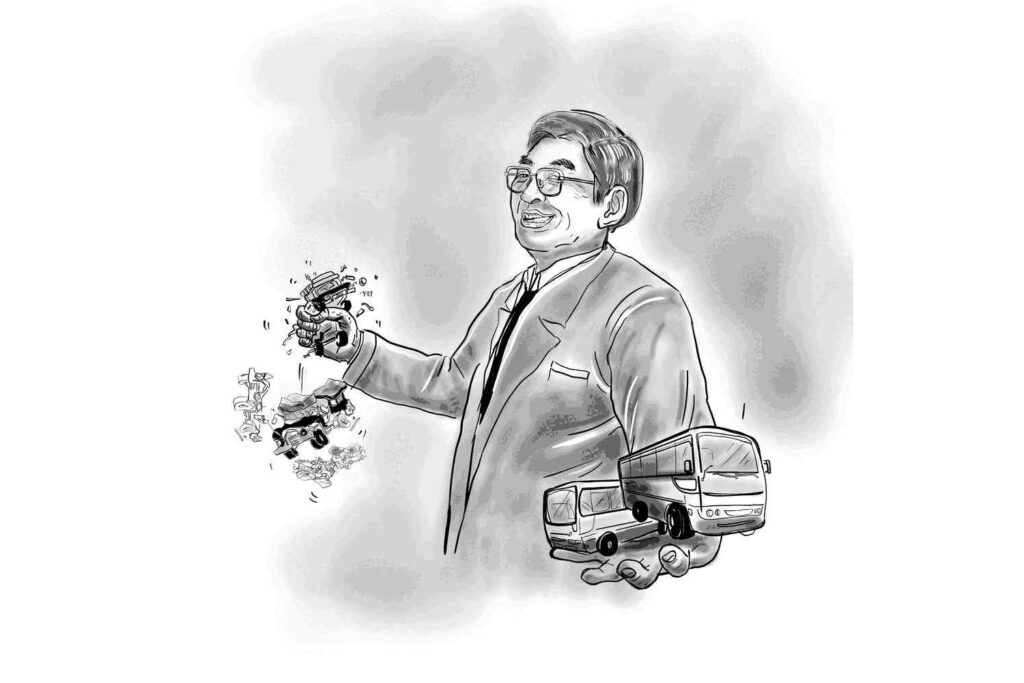
The Asian Development Bank (ADB), in cahoots with the successive Duterte and Marcos regimes, blame traffic, pollution and economic losses to force the phaseout of traditional jeepneys and replace them with Japan-made surplus vehicles or new electric vehicles. Japan has allocated $10 billion in “climate finance” to implement various “initiatives” to combat climate change, including “low carbon” transport programs like the jeepney phaseout.
The phase out took shape through the Public Utility Vehicle Modernization Program (PUVMP) under the Duterte regime in 2017. But the push began as early as 2012, when the ADB did a series of researches on the transport system in Davao City, which later became the Davao Public Transport Modernization Project in 2015. The project’s main objective is to close down the current system of jeepneys, buses and tricycles in the city and replace it with a Bus Rapid Transit (BRT) system, using bank-approved vehicles, machinery and material. (There is a similar research series in “transportation modernization” for Metro Manila in 2017).
In July, the ADB granted the Davao local government (held by the Dutertes) a $1 billion loan to start the implementation of the BRT. This will reduce commuter routes from 120 to 29 and replace over 7,000 traditional jeepneys and thousands of tricycles with 1,100 buses. Alongside this change is the refitting of Davao roads, the laying of new roads, the construction of sheds, depots and bus terminals, the renovation of intersections, construction of a driving school, and a thousand and one things to be adjusted to make the BRT system work. A total of ₱73.37 billion is required to fund the project. Apart from loans, funds will be taken from the national and local budgets.
To neutralize small drivers and operators objecting to the underhanded phaseout, their organizations were attacked using the entire state fascist machinery. From 2017, the local government also forcibly implemented franchise consolidation.
The ADB brags that the BRT-Davao will serve as a model for transport “modernization” nationwide. Next in line are the BRT-Quezon City and BRT-Cebu.
Killing the king of the road
To justify driving traditional jeepneys off the streets, the ADB and the reactionary state in its “researches” propagated the view that jeepney design and technology are “outdated,” maintenance is inadequate and operations are uncoordinated. (One such research was prepared by the Enrique Razon Logistics Institute of De La Salle University for the Department of Environment and Natural Resources.)
The most used mode of transportation that millions of Filipinos rely was tagged “unsafe, uncomfortable, a health-hazzard, and unreliable because it is never on time.” Among the many excuses given were its lack of a door and having passengers board and disembark from behind the vehicle and not into “sidewalks.” Nevertheless, these studies provided no data on the alleged damage associated with jeepneys, such as accidents, and others.
The jeep, originally made from military vehicles left behind by the US during World War II, and for decades had been transporting citizens to their destinations, suddenly became a “menace on the street.”
It was declared a “major contributor” of pollution, even when it comprises only 300,000 of the 12.75 million various type vehicles nationwide and emits lower than 15.5% of the Philippines’ total recorded GHG (greenhouse gasses).
When small drivers and operators opposed the program, they were labeled “anti-modernization,” and, in not a few cases, communists and “NPA” to intimidate and silence them. They were forced to compromise on what the ADB called a “just transition” consisting of a one-shot aid to the affected families and a loan to buy a vehicle worth a staggering ₱2 million.
(Meanwhile, the attack by ADB and the state ignores the source of nearly 85% of GHG, such as factories, plants, large businesses, and other vehicles. Also deafening is its emphasis on the traditional jeepney as a “pollutant” while Japan and its own industries, including the vehicles they force into the Philippines, are far more responsible for global carbon dioxide emissions.)
Replacing jeeps, the state and the comprador bourgeoisie introduced fabled “climate-resilient” vehicles such as the Hinu XU343, Isuzu-Centro, Isuzu-Almazora and Toyo Motors E-Jeep, all made in Japan. They allegedly pass the European emission standard, the standard that serves US and European car manufacturers. They are labeled as “modern jeeps” and “e-jeeps,” even though they bear no resemblance to traditional jeeps and are actually Japanese and Korean-designed minibuses.
With their prices beyond the reach of drivers and operators, the biggest compradors and bureaucrats seized the opportunity to build corporations with hundreds of registered vehicles to appropriate the major and biggest routes. (Along with franchise consolidation is the plan to reduce routes and limit them to one or a few cooperatives or corporations.) Meanwhile, operators who fell into the trap and relied on the promises of consolidation and “modernized jeepneys” are now drowning in debt at falling-apart vehicles. (See related article “Marcos accountable for the massacre of drivers’ and operators’ livelihood“).
Profitting from loans, profitting more from the product
The ADB is a multilateral bank built by imperialist Japan to channel surplus capital of the Japanese state and monopoly capitalists. It exports such capital in the form of official development assistance or ODA or loan and other financial instruments for “development projects.” Aligned with its financial monopolist nature, these loans facilitate the sale of Japanese services and surplus goods, primarily heavy machineries and vehicles. It is based in Mandaluyong city.
The Philippines is one of the biggest “beneficiaries” or borrowers from the bank and from Japan itself. Two-thirds (2/3) of the ODA that the Philippines “receives” is Japanese. According to its website, it pushes at least 30 infrastructure projects in the Philippine transportation sector. More than 20 of them are active, five are at the approval level and two are at the proposal level. (Meanwhile, the World Bank holds 18 projects in the sector.)
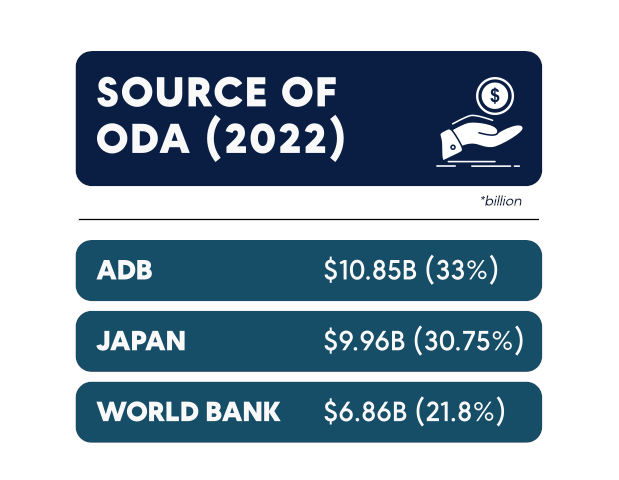
Its loan conditions are the use of Japanese expertise, design, machinery, and often but not always, products. It regulates the procurement process (equipment and supplies purchase) and awarding of contracts. In BRT-Davao, for example, the purchase of 1,100 buses conforming to Japan’s “strict” standards was stipulated on the loan.
Under PUVMP, the Philippines will become a giant dumping ground for mostly used cars (second hand) from Japan, Korea and even its rival China—along with its surplus products such as cameras, air conditioning, wifi, fare collection systems, and other add-ons made requisites for “modernization.” It will also serve as a long-term market for batteries, parts and engines needed for vehicle maintenance. Electric cars will become clients of operating and yet-to-operate foreign renewable energy plants.
Like the BRT-Davao, the jeepney phaseout is part of a larger design to replace the entire transport system. This encompasses large-scale infrastructure projects such as road-widening and laying “missing” road networks (or where none exist), repairing and laying bridges where there are none, laying new traffic systems, building gigantic terminals for “modern jeeps,” developing a uniform fare -collection system (replacing conductors), and many other targets of Japan surplus capital and products.
Some related and interconnected projects have been approved such as the Metro Manila Bridges Project and the Epifanio de los Santos Greenways Project, as well as the renovation of LRT 1 and LRT 2. Also approved is the project of laying a new rail system such as the North-South Commuter Railway Project that will connect to the existing railway tracks (LRT 1, LRT 2, MRT.) The Manila Metro Rail Transit Line 4 Project will set to be approved soon.
Largest among the projects is the $7-billion subway project “co-financed” by ADB and the Japan International Cooperation Agency. Japanese companies clinched contracts to supply 25 tunnel boring machines and other machinery, as well as for exploration, design and land boring.
In all of these projects, the ADB, the Duterte regime, and now the Marcos regime, are babbling that they will deliver an “affordable, safe and reliable” mode of public transportation to make its killing of the people’s livelihood acceptable.

